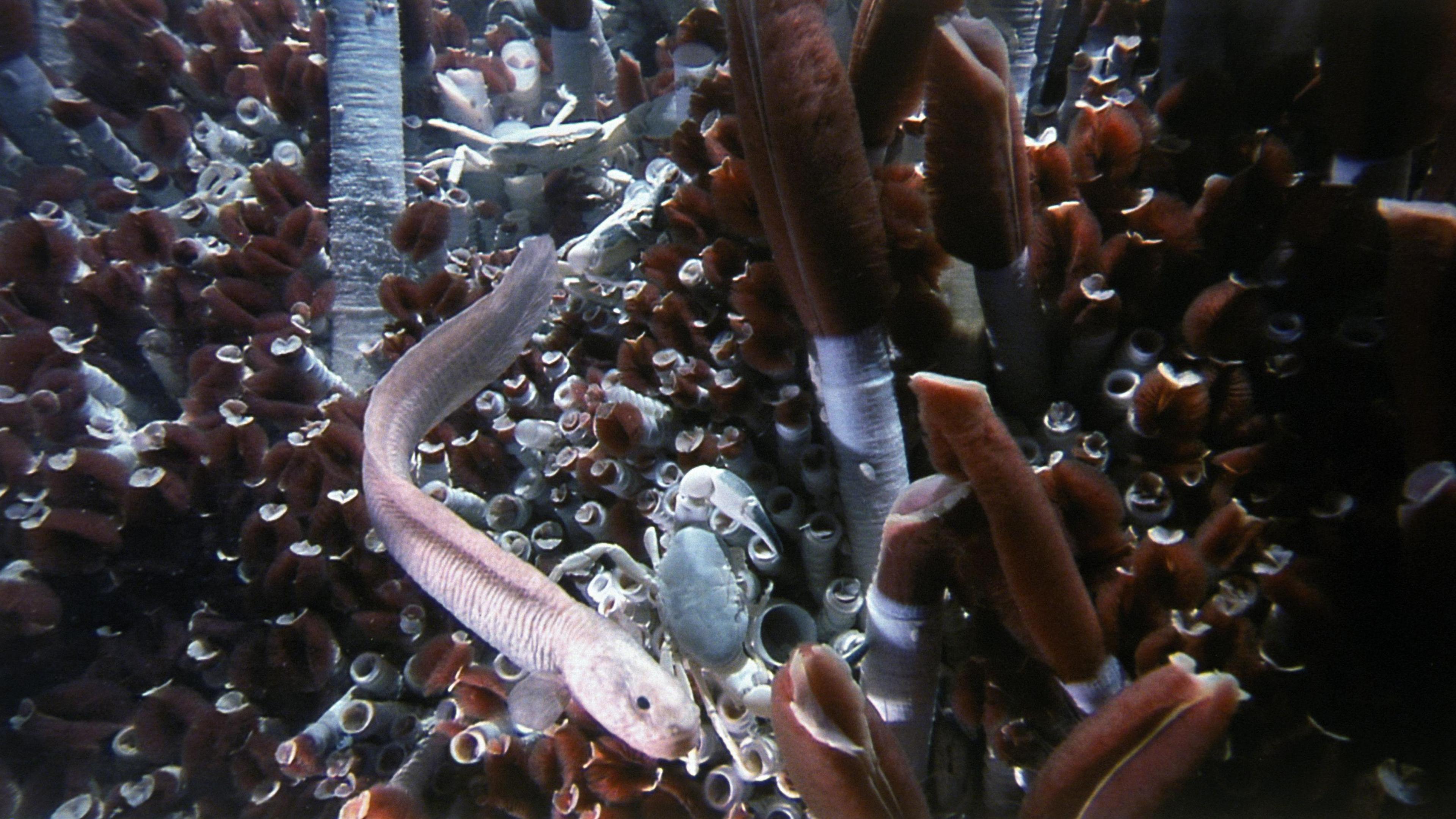Animal life discovered UNDER the seabed

Red-topped tubeworms (like the ones pictured here) were found thriving in the harsh environment. They provide a habitat for marine life such as eelpouts.
- Published
Large animals including tube worms and snails have been discovered living under the seabed.
Scientists used to think the dark and ever-changing environment was unfit for life to thrive until they found tiny microbes thriving there.
But this new study found there were even larger creatures living under the Earth's crust within hydrothermal vents.
Only 26% of the Earth's seabed has been explored and mapped.
The discoveries suggest it is far more populated than originally thought and that there are more than likely many undiscovered species living there.
More underwater worlds
- Published2 September
- Published23 November 2021
- Published3 October 2021
Previous explorations have shows crabs and giant clams in areas where scientists didn't think they could survive. But the tubeworms (on the left of the picture) were found thriving in pockets of warm water underneath the seabed.
The vents are similar to hot springs found on land.
They are formed when sea water seeps through the seabed and is warmed by magma - hot liquid rock - in the Earth's crust.
It then bursts back through the seabed and solidifies, creating a mineral-rich structure.
These structures are often found close to tectonic plates where there is lots of movement in the Earth's crust.
The researchers also raised concerns about preservation of the seabed.
Many marine conservationists are worried about proposed deep-sea mining, where tech companies hope to extract useful minerals commonly found on the sea floor like cobalt and nickel.
These naturally occurring minerals are used in everyday life, for example to make smartphone batteries and to power electric vehicles.
How did they find these animals?
What creatures might live below the ocean ground?
The scientists from the Royal Netherlands Institute for Sea Research studied rock samples on the seabed using a remotely-operated robot around 2,500 meters (8,251 feet) below the surface.
They believe that the organisms live on nutrients produced when the seawater mixes with magma.
Upon studying the samples, they discovered adult tubeworms, polychaete worms, and sea snails.
Marine biologist Sabine Gollner, who was one of the authors of the study, said the ecosystem "in this area is not restricted to what we see above, but it also includes life in the subsurface."
